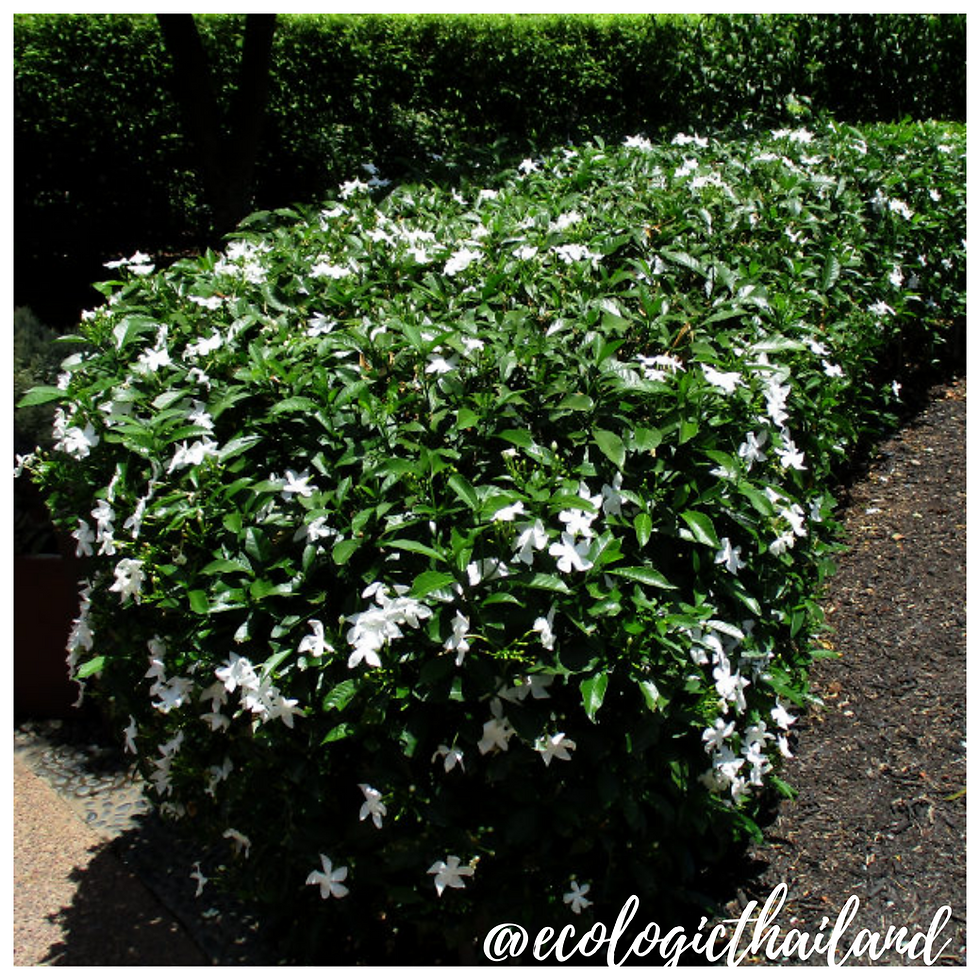Passionfruit
- Eco-Logic Resort
- Sep 21, 2020
- 3 min read
Updated: Apr 23, 2021
Saowarot| เสาวรส | Passiflora edulis
Family: Passifloraceae- Genus: Passiflora

Passionfruit can be found at the aqua hydroponic greenhouse, at the entrance of the restaurant and around the kitchen area of Eco-Logic Thailand on Mount Never-rest.
Passion fruit, is a vine. It is cultivated commercially in Paksong area for its sweet, seedy fruit. The fruit is a type of berry, round to oval, either yellow or dark purple at maturity, with a soft to firm, juicy interior filled with numerous seeds. In this area the yellow variation of passion fruit is grown. The fruit is both eaten and juiced, the juice often added to other fruit juices.
The fruit ripens about 80 days after pollination turning from green to yellow and falls to the ground a few days after it ripens where it can be gathered

THE VINE
Passion fruit is a perennial vine; tendrils are borne in leaf axils, and have a red or purple hue when young.
There are two main varieties: a purple-fruited type, and the yellow-fruited.

PASSIONFRUIT LEAVES
Passion fruit leaves can be used both raw and cooked and are often used as a substitute for spinach in recipes. The leaves can also be steeped in hot water to create a nutrient-rich tea that has anxiety-relieving properties.

PASSION FRUIT FLOWERS
Usually the passion fruit vine produces a single flower 5–7.5 centimeter wide at each node. The flower has 5 oblong, green petals and 5 white petals The base of the flower is a rich purple

PASSION FRUIT
The fruit produced is entirely fleshy (making it botanically a berry. The outside color of the berry ranges from yellow to reddish. The fruit is 4—7.5 centimeter in diameter; yellow fruits are up to 80 grams. The smooth, leathery rind is 9–13 mm thick. Within the berry, there are typically 250 black seeds, each 2.4 mm in length. Each seed is surrounded by a membranous sac filled with pulpy juice. The flavor of the juice is slightly acidic and musky.
CULINARY USES OF PASSION FRUIT
You may eat passion fruit juice, pulp, coulis, jam, and nectar straight from the fruit. Or, add it to sauces, salads, baked goods, and yogurt. Click on the link of the Food Forest Kitchen to discover some recipes we use with passionfruit.
Passion fruit leaves can be used both raw and cooked and are often used as a substitute for spinach in recipes. The leaves can also be steeped in hot water to create a nutrient-rich tea that has anxiety-relieving properties.
NUTRITION
Passion fruit is loaded with fiber, antioxidants, flavonoids, vitamins, and minerals that the human body requires or benefits from. Passion fruit contains vitamins A and C, riboflavin, niacin, iron, phosphorus, magnesium, potassium, copper, fiber, and protein. The percentages of vitamins and nutrients present in passion fruit are surprisingly high compared to other sources, making passion fruit a worthwhile addition to any diet.
TRADITIONAL MEDICINAL USE OF MANGOSTEEN
NOTE: please take advice from a doctor if you are planning to use herbal medicine.
Passion fruit is highly rich in Vitamin C, beta-cryptoxanthin and alpha-carotene that can boosts immunity. It also has iron which increases haemoglobin in red blood cells. The rich content of riboflavin (Vitamin B6) and niacin (Vitamin B3) in passion fruit can help in regulating the thyroid activity in our body.
INTO THE WILD: a down to earth experience

For guests and visitors to Paksong we organize weekly tours "The Edible Forest" and Foraging weekends: Into the Wild. We work with local guides to take you in the jungle of Paksong. After foraging, we will cook a meal with the ingredients, using bamboo together with you!
Come and join and learn about the abundance of food that nature gives us!
INTO THE WILD!


















Comments